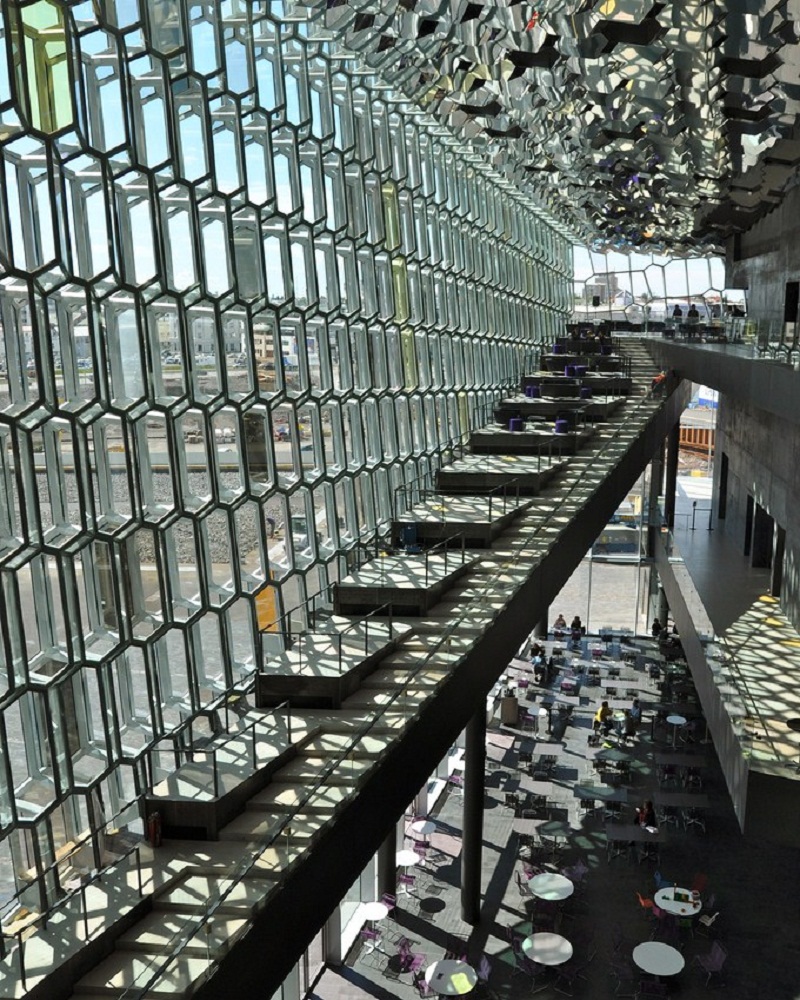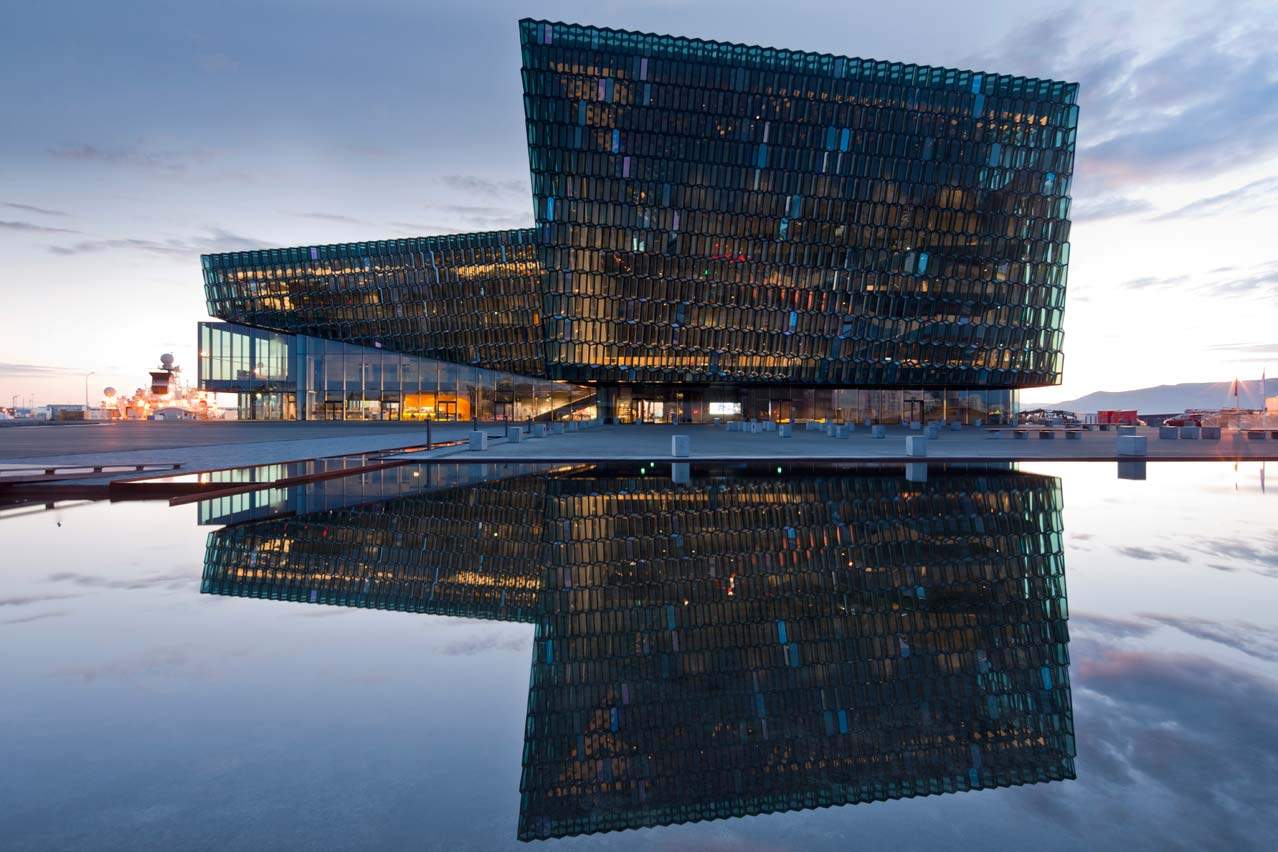Reykjavik’s Concert Hall Wins Major EU Prize for Architecture
Reflective of both light and water, the building scatters the harbour surface with dancing, incandescent rainbows.
Every year, the Mies van der Rohe Award recognises and rewards European architectural developments that present new ideas and display the innovative application of technology.
This year, the Harpa Concert Hall, a collaboration between Studio Olafur Eliasson and Henning Larsen Architects, has been declared the winner. Constructed in 2011 as part of a plan to rejuvenate Reyjavik’s harbour front, the building features a glittering façade, designed by Eliasson. It’s comprised of glass pieces that, in their appearance and action, mimic Icelandic basalt crystals. Reflective of both light and water, they scatter the harbour surface with dancing, incandescent rainbows. During the day, the glass ensures the maximisation of internal natural light, while LED is used at night.

Initially, the hall was intended to be just one element in a reconstruction of the waterfront, but the Global Financial Crisis hit Iceland hard, bringing construction to a halt. “Henning Larsen made robust city planning suggestions to make sure the building didn’t become a stand-alone, monolithic, disconnected monster, but then the financial crisis came and a number of the development plans for the city collapsed,” Eliasson has told Disegno.Daily. “That means that the building now stands a bit alone. It may seem very monolithic, but a lot of work was put into its coexistence with buildings in the area. The crisis, disregarding what people think of the building now, has become a central part of what Harpa is today.”
With its interior measuring 28,000 square metres, the hall has plenty of space for the Icelandic Opera and the Iceland Symphony Orchestra, both of which now call it home. Each of the four concert halls symbolises one of the four natural elements. The grand hall, with 1800 seats, is named ‘Eldborg’, a reference to volcanoes (fire). The others denote the Northern Lights (air), lagoons (water) and crystals (earth).
Frustrated by the dominance of ‘investor and profit-driven’ projects, Eliasson believes that architecture is about engaging with cultural geography. ‘I always ask myself, “How can you be an architect and not have a dancer, a philosopher and a social scientist at the table when you do your sketches?”’

Images: Sarah_Ackerman
[Via Inhabitat]






